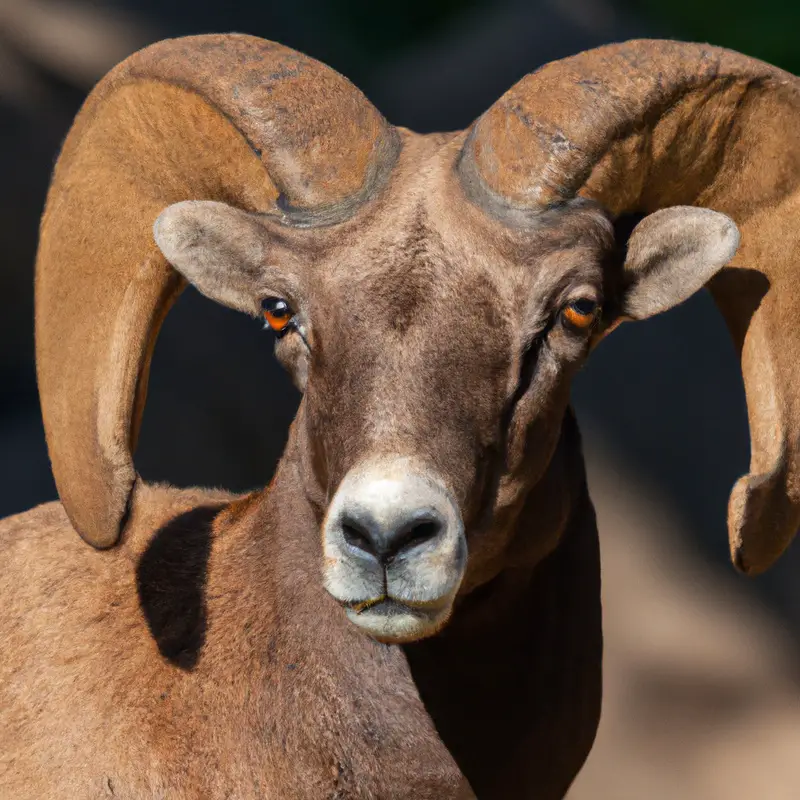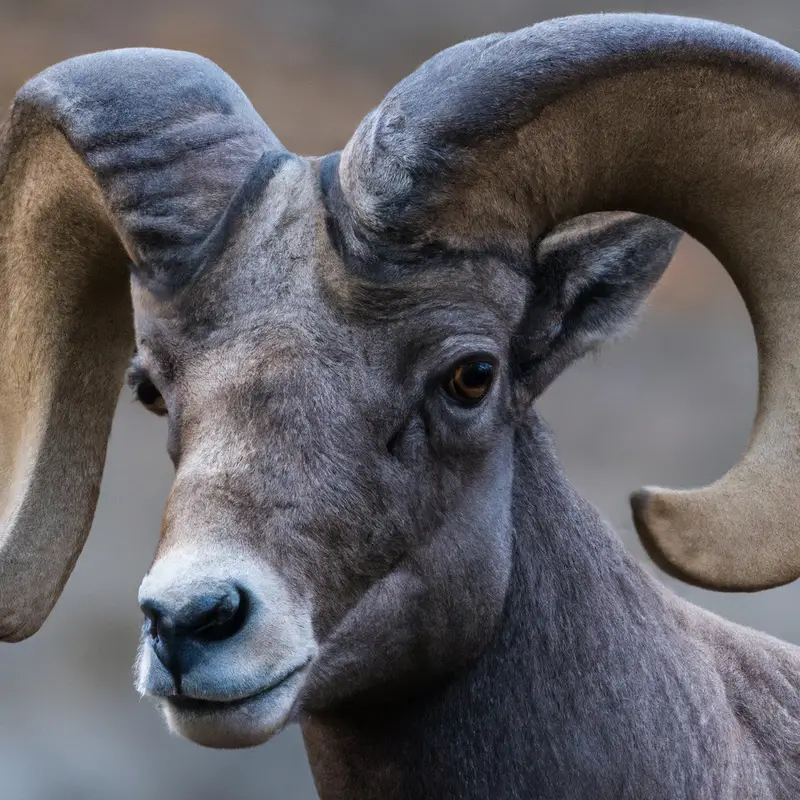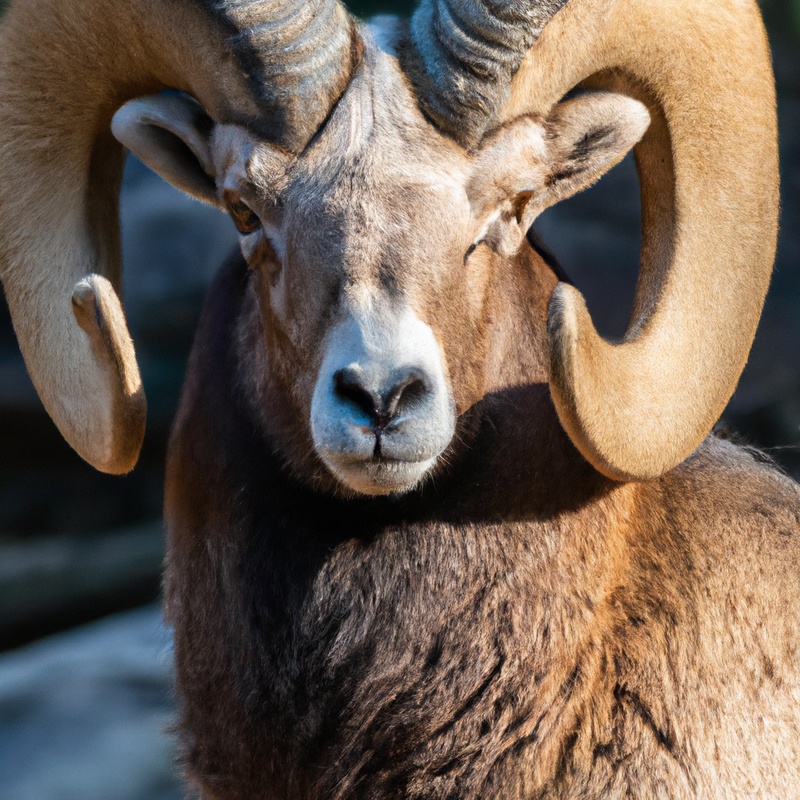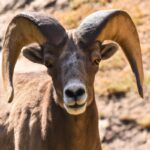Key Takeaways:
- Hunting desert bighorn sheep in Colorado requires a specific license and a thorough understanding of hunting regulations.
- The Colorado desert bighorn sheep population has been successfully managed through conservation efforts and hunting quotas.
- Hunting desert bighorn sheep in Colorado offers a challenging and rewarding experience for experienced hunters.
- Conservation organizations play a crucial role in preserving the habitat and population of desert bighorn sheep in Colorado.
Are you ready to embark on a thrilling hunting adventure in the stunning landscapes of Colorado? If you’re seeking the ultimate challenge, then hunting desert bighorn sheep should be at the top of your list.
As an avid hunter with years of experience in pursuing these majestic creatures, I can assure you that the pursuit of bighorn sheep is unlike any other.
In this comprehensive guide, we’ll explore everything you need to know about planning, preparing, and executing a successful desert bighorn sheep hunt in Colorado. Get ready to immerse yourself in the world of these elusive creatures and discover the secrets to a rewarding hunting experience.
Aspect | Pros | Cons |
|---|---|---|
Challenging | Increases hunting skills and knowledge | Requires physical endurance and stamina |
Adventure | Opportunity to explore rugged and beautiful landscapes | Potential risks and dangers |
Rarity | Rare and sought-after hunting experience | Limited availability and high demand |
Conservation | Contributes to wildlife management and population control | Controversial among animal rights activists |
Trophy Potential | Possibility of harvesting a prized trophy animal | Often requires significant time and effort |
Camouflaging Skills | Opportunity to develop and improve camouflaging and stalking techniques | Requires patience and careful planning |
Fulfilling | Provides a sense of accomplishment and fulfillment | Moral and ethical considerations for some individuals |
Planning for a Desert Bighorn Sheep Hunt
Researching and Selecting Hunting Units in Colorado
When researching and selecting hunting units in Colorado, there are a few key factors to consider.
First, study the state’s hunting regulations and seasons to ensure you understand the rules and timelines.
Next, research the different units available and examine factors like herd health, population density, and terrain.
It’s also important to gather information on public and private land access, as well as any hunting restrictions.
Utilize resources like state wildlife agencies, online forums, and experienced hunters to gather valuable insights and make an informed decision.
Hiring a Professional Guide or Going DIY
If you’re planning to hunt desert bighorn sheep in Colorado, you have two options: hiring a professional guide or going DIY. Hiring a professional guide can provide several benefits.
They have extensive knowledge of the area, increasing your chances of a successful hunt.
They can also provide valuable tips and strategies, making the experience more enjoyable. On the other hand, going DIY allows you to have complete control over your hunt.
It can be a rewarding challenge and gives you the freedom to hunt at your own pace.
However, it requires thorough planning, research, and experience in hunting these animals. Consider your level of expertise, resources, and the type of hunting experience you are looking for before making a decision.
Obtaining required Licenses and Tags
To go hunting for Desert Bighorn Sheep in Colorado, you’ll need to obtain the necessary licenses and tags.
Here’s what you need to do:
- Check the Colorado Parks and Wildlife website for the specific requirements and regulations regarding licenses and tags for hunting Desert Bighorn Sheep.
- Look out for any application deadlines or limited quota areas. Some areas have a limited number of tags available, so it’s important to apply on time.
- Complete the application and pay the required fees. Make sure to provide accurate information and follow the instructions carefully.
- Wait for the results of the drawing. If you are selected, you will be issued a license and tag. If not, you may still have the option of purchasing a left-over or over-the-counter tag, depending on availability.
- Once you have your license and tag, make sure to carry them with you at all times during your hunt. It’s important to abide by the regulations and have the necessary documentation while hunting.
Remember to familiarize yourself with the specific rules and regulations in the area you will be hunting, as they may vary.
It’s always a good idea to contact the Colorado Parks and Wildlife office for any additional information or clarification.
Happy hunting!

Preparing for a Desert Bighorn Sheep Hunt
Physical Fitness and Training
Physical fitness plays a key role in a desert bighorn sheep hunt. It’s important to train your body for the demands of hiking at high altitudes and rugged terrain.
Focus on improving your cardiovascular endurance, strength, and balance through exercises like hiking, running, weightlifting, and yoga.
Additionally, make sure to acclimate yourself to the altitude by spending time in similar conditions before the hunt. Regular training and preparation will greatly enhance your chances of success in the field.
Gear and Equipment Checklist
Gear and Equipment Checklist:
- Binoculars: A good pair of binoculars is essential for spotting bighorn sheep from a distance. Look for high-quality optics with a wide field of view.
- Rifle and Ammunition: Choose a rifle that’s reliable and accurate, preferably in a caliber suitable for big game hunting. Don’t forget to bring enough ammunition for sighting in your rifle and for the hunt itself.
- Optics: A scope with adjustable magnification will help you make accurate shots at longer ranges. Additionally, consider bringing a spotting scope to observe the sheep in more detail.
- Camouflage Clothing: Blend into your surroundings by wearing camouflage clothing that matches the desert landscape. Opt for lightweight and breathable materials to stay comfortable in the arid conditions.
- Hunting Boots: Invest in a pair of high-quality hunting boots that provide ankle support and have good traction. Desert terrains can be rugged, so durable and comfortable footwear is crucial.
- Backpack: A sturdy, comfortable backpack is essential for carrying your gear, water, and supplies during the hunt. Look for one with multiple compartments for easy organization.
- Navigation Tools: Carry a GPS device or compass to help you navigate through the desert. Make sure you are familiar with how to use them before heading out.
- Range Finder: A range finder will help you accurately judge distances, ensuring you make ethical shots. Choose one with good optics and reliable functionality.
- Game Bags: Game bags are essential for field-dressing and transporting your harvested sheep. Look for breathable and lightweight bags that can keep the meat cool.
- Survival Kit: Prepare for any unexpected situations by carrying a basic survival kit that includes items like a first-aid kit, fire starter, emergency shelter, and extra food and water.
Remember to check your gear and equipment well in advance of your hunt.
Ensure everything is in working order and properly packed.
By having the right gear and equipment, you’ll be better equipped for a successful desert bighorn sheep hunt.
Important Hunting Tips and Techniques
Important Hunting Tips and Techniques:
- Stay patient and observant: Take your time and scan the area for any signs of movement or activity. Desert bighorn sheep are known for their ability to blend into the environment.
- Plan your approach: Take note of wind direction, vegetation, and terrain features that can affect your approach. Use the natural cover to your advantage and move slowly to avoid being detected.
- Practice your shooting skills: Ensure that you are proficient with your weapon and practice shooting from various distances and angles. This will increase your chances of making a clean and ethical shot.
- Stay physically fit: Hunting in rugged terrains requires endurance and stamina. Regular exercise and conditioning will help you cover more ground during the hunt.
- Respect the animal and its habitat: Always follow the hunting regulations and guidelines set by the authorities. Practice ethical hunting by taking responsible shots and minimizing waste.
- Optimize your gear: Invest in quality hunting gear such as clothing, boots, and optics. Proper gear can make a significant difference in your overall comfort and effectiveness during the hunt.
- Learn from experienced hunters: Seek advice from experienced hunters or guides who have successfully hunted desert bighorn sheep before. Their insights can be invaluable in improving your hunting skills and techniques.
- Remain adaptable: Hunting conditions can change rapidly, so be prepared to adjust your strategies accordingly. Be flexible and willing to try different approaches if needed.
Remember, hunting is not just about harvesting an animal; it’s about the experience and connecting with nature.
Enjoy the process and the beauty of the wilderness while respecting the wildlife and their habitat.
Understanding Desert Bighorn Sheep Behavior and Habitat
Habitat and Range of Desert Bighorn Sheep
Desert bighorn sheep are highly adaptable animals that can be found in a variety of rugged terrains including deserts, canyons, and mountains.
They are known for their ability to navigate steep slopes and rocky terrain with ease.
These sheep prefer areas with ample vegetation for grazing, as well as access to water sources.
Their range extends across the southwestern United States, including parts of Colorado, Arizona, and Nevada.
Although they are well-suited to arid environments, they can also be found in alpine meadows at higher elevations.
Feeding, Mating, and Rutting Patterns
Feeding: Desert bighorn sheep primarily feed on grasses, shrubs, and other vegetation found in their habitat.
They are well-adapted to survive in arid regions with limited food sources.
Mating: Breeding season, called the rut, occurs in late fall to early winter.
During this time, males compete for dominance and mates by ramming their horns together.
The strongest males, known as rams, establish territories and mate with multiple ewes.
Rutting Patterns: The rutting behavior of desert bighorn sheep involves frequent vocalizations, scent marking, and aggressive displays.
Ewes typically give birth to one lamb in the spring after a gestation period of around six months.
Remember to observe these behaviors from a safe distance and avoid disrupting their natural routines.
Identifying Signs and Tracks of Desert Bighorn Sheep
Identifying signs and tracks of Desert Bighorn Sheep can greatly enhance your hunting experience. Look for hoof prints that are round and pointed, often measuring about 2-3 inches in length.
Their tracks usually have two sharp edges in the front and a deeper imprint in the middle due to their unique, split hooves.
Also, keep an eye out for droppings, known as scat, which are cylindrical and pointed at the ends. Another clue is finding areas where the sheep have rubbed against trees or bushes, leaving behind fur and broken vegetation.
Stick to these indicators, and you’ll be on the right track to spotting a Desert Bighorn Sheep!
Strategies for Hunting Desert Bighorn Sheep
Glassing and Spot-and-Stalk Technique
Glassing and Spot-and-Stalk Technique are two effective strategies for hunting desert bighorn sheep. Glassing involves using binoculars or spotting scopes to scan the terrain and look for sheep.
It is crucial to choose a vantage point with a wide field of view.
Look for any movement or shapes that might indicate the presence of sheep. Once you spot sheep, the spot-and-stalk technique comes into play.
This involves quietly moving closer to the animals while using available cover to remain hidden.
Move slowly and carefully, taking advantage of natural features like rocks and vegetation. Maintain a low profile and be patient.
When you get within range, take your shot.
These techniques require practice and a good understanding of sheep behavior and habitat. By honing your glassing and spot-and-stalk skills, you can increase your chances of a successful hunt.

Decoying and Calling Methods
When it comes to decoying and calling methods for hunting desert bighorn sheep, there are a few effective strategies to consider. Firstly, using decoys that mimic the appearance and behavior of a desert bighorn sheep can attract curious rams within range.
Secondly, employing calling techniques, such as imitating the vocalizations of female sheep or using a rattling horn, can lure in dominant rams looking for a mate or territorial disputes.
Finally, blending in with the natural surroundings and remaining patient is key in order to increase your chances of a successful hunt. Remember to always check local hunting regulations and practice ethical hunting practices.
Approaching and Positioning for a Successful Shot
Approaching and positioning for a successful shot is a key aspect of hunting desert bighorn sheep. To increase your chances of a successful shot, it’s important to approach the sheep from downwind, taking advantage of the wind to mask your scent.
Maintain a low profile and move slowly to avoid alerting the sheep.
Position yourself for a clear shot, considering the terrain and vegetation. It’s crucial to be patient and wait for the right opportunity to take your shot.
By staying focused and taking these steps, you can improve your chances of a successful hunt.
Field Dressing and Butchering a Desert Bighorn Sheep
Field Dressing Techniques
Field dressing is an essential skill for hunters.
Here’s the technique you need to know:
- Approach the animal cautiously and ensure it is dead.
- Start by making a small incision around the anus to loosen the fur and expose the internal cavity.
- Carefully cut the skin along the belly, from the anus to the chest.
- Use your hands or a knife to remove the entrails and organs, being cautious not to puncture anything.
- Rinse out the cavity with water and inspect for any leftover debris.
- Hang the carcass to cool and remove the hide.
Remember, field dressing should be done quickly and efficiently to preserve the quality of the meat.
Always follow local regulations and safety guidelines.

Skinning and Quartering the Animal
To properly skin and quarter a desert bighorn sheep, you will need a sharp knife and some knowledge of the animal’s anatomy. Start by making a small incision around the belly and carefully remove the skin.
Next, remove the internal organs, keeping the meat clean and uncontaminated.
Then, divide the carcass into manageable sections, such as the front and rear quarters. Finally, pack the meat in game bags or coolers for transportation.
Meat Care, Preservation, and Storage
Meat Care, Preservation, and Storage
Frequently Asked Questions (FAQs)
Can non-residents hunt Desert Bighorn Sheep in Colorado?
Yes, non-residents can hunt Desert Bighorn Sheep in Colorado. Colorado allows non-resident hunters to apply for special licenses to hunt bighorn sheep in designated hunting units.
These licenses are available through a lottery system, and non-residents need to apply and pay the appropriate fees.
If selected, non-residents can enjoy the opportunity to hunt Desert Bighorn Sheep in Colorado’s beautiful and rugged landscapes. It’s important to familiarize yourself with the state’s regulations and guidelines before planning your hunt.
How much does it cost to go Desert Bighorn Sheep hunting in Colorado?
Going Desert Bighorn Sheep hunting in Colorado can be an exciting adventure, but it’s important to consider the cost.
The cost of Desert Bighorn Sheep hunting in Colorado can vary depending on several factors.
Typically, guided hunts can range anywhere from $8,000 to $15,000 or more.
However, it’s essential to note that this cost often includes transportation, meals, lodging, and the expertise of professional guides.
Additionally, there may be additional fees for licenses and tags.
It’s crucial to do thorough research and reach out to hunting outfitters to get accurate and up-to-date pricing information for your specific hunting trip.
Are there any age restrictions for hunting Desert Bighorn Sheep in Colorado?
In Colorado, there are age restrictions for hunting Desert Bighorn Sheep. To hunt these majestic creatures, you must be at least 16 years old.
This age requirement ensures that hunters have the necessary maturity and physical ability to participate in such a challenging and responsible activity.
It also helps to protect the population of Desert Bighorn Sheep and promote sustainable hunting practices. So if you’re younger than 16, don’t worry, there will be plenty of opportunities to experience the thrill of hunting Desert Bighorn Sheep when you’re old enough!
What firearm or bow is recommended for Desert Bighorn Sheep hunting?
For Desert Bighorn Sheep hunting, it is recommended to use a high-powered rifle in calibers such as .270 Winchester, .270 WSM, 7mm Remington Magnum, or .300 Winchester Magnum. These calibers offer the necessary accuracy, range, and stopping power to effectively take down a Desert Bighorn Sheep.
In terms of bows, a compound bow with a draw weight of at least 50 pounds and a large cutting diameter broadhead is recommended.
It’s important to ensure that you are proficient and comfortable using your chosen firearm or bow before heading out for the hunt.
Final Verdict
Hunting Desert Bighorn Sheep in Colorado is an exhilarating and rewarding experience for those seeking a challenging adventure.
Through proper planning, physical fitness, and understanding the behavior and habitat of these majestic creatures, hunters can increase their chances of a successful hunt.
Whether hiring a professional guide or going the DIY route, obtaining the necessary licenses and tags is crucial.
Additionally, mastering hunting techniques such as glassing, decoying, and stalking will greatly enhance the chances of a successful shot.
Lastly, proper field dressing and meat care are essential for preserving the high-quality meat of the Desert Bighorn Sheep.
Remember, patience, respect for nature, and adherence to regulations are key to a memorable and ethical hunting experience.








